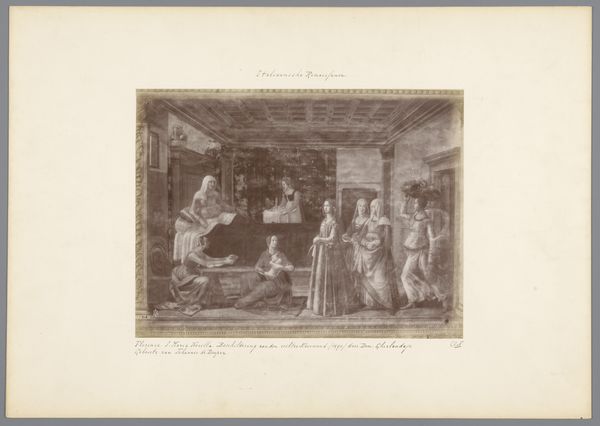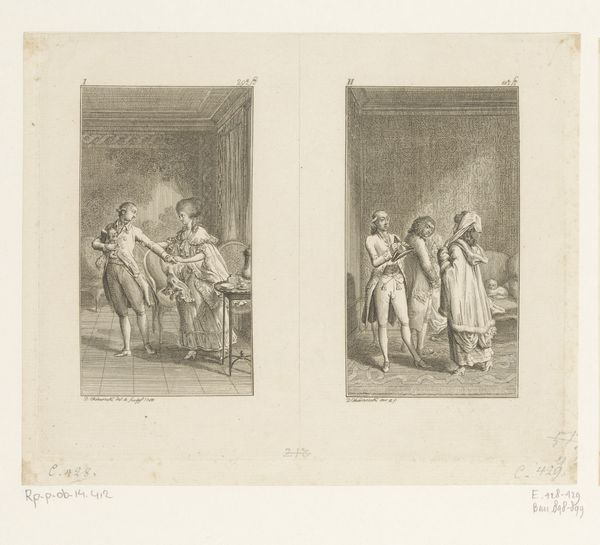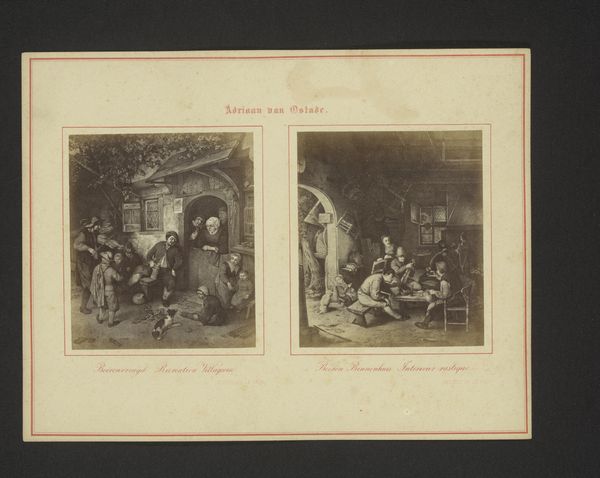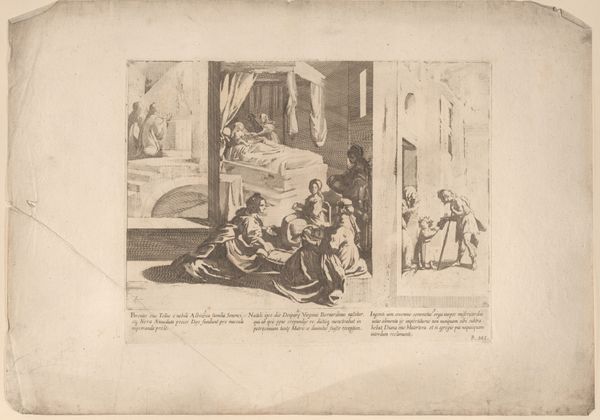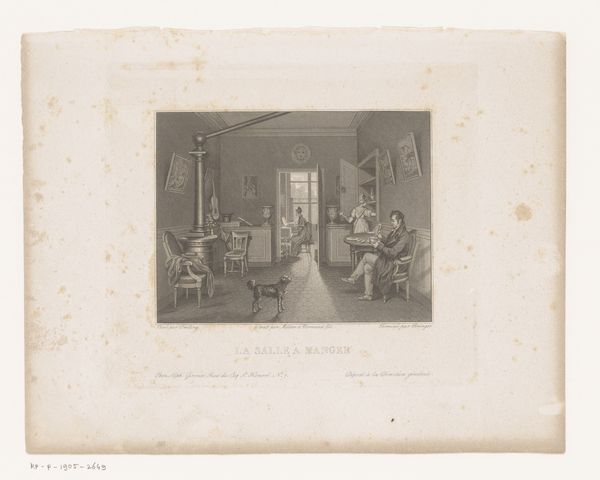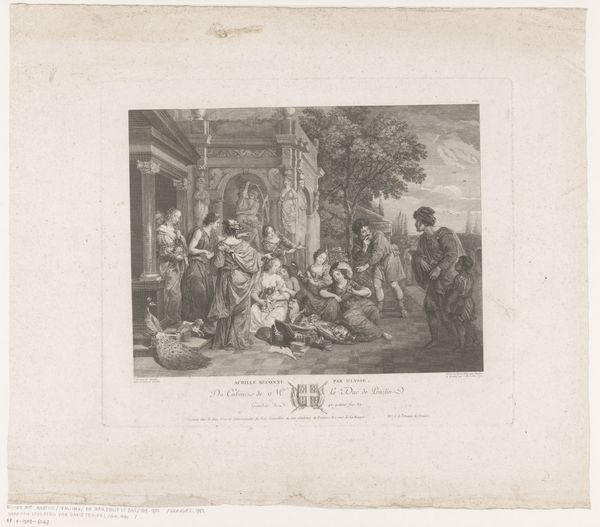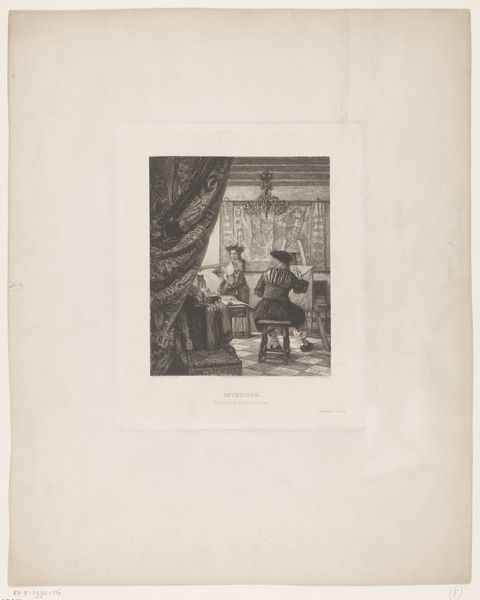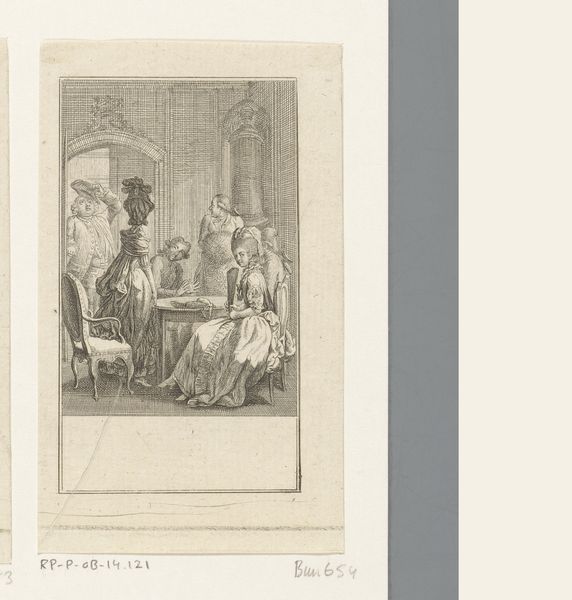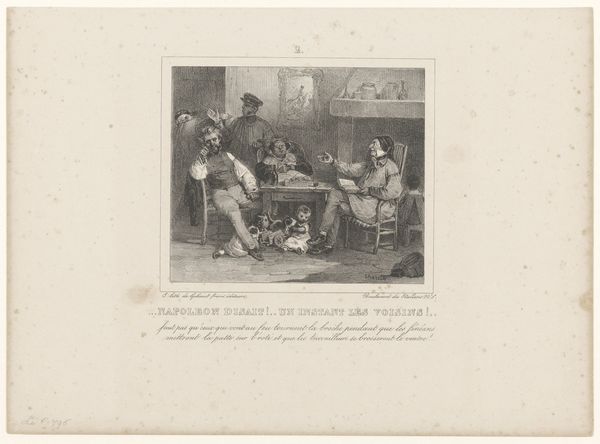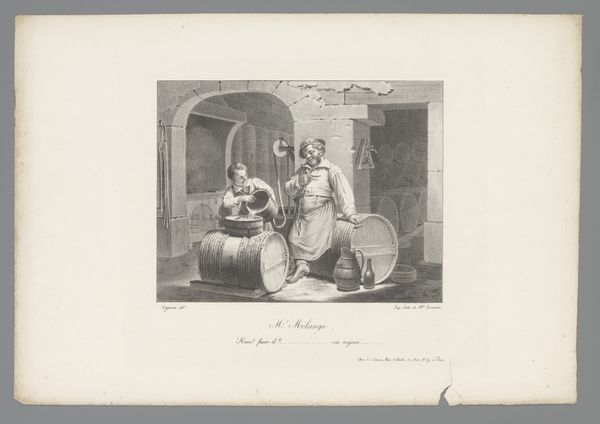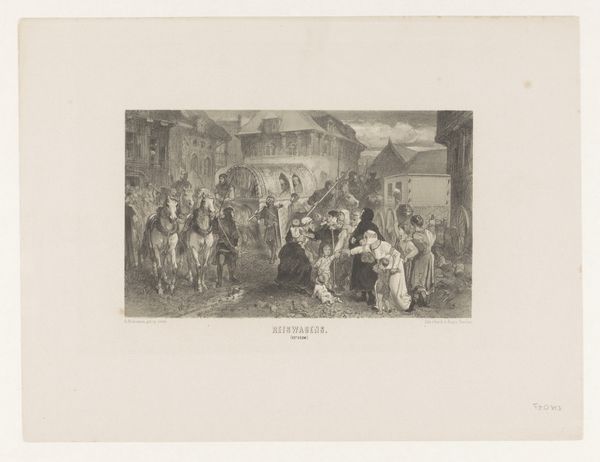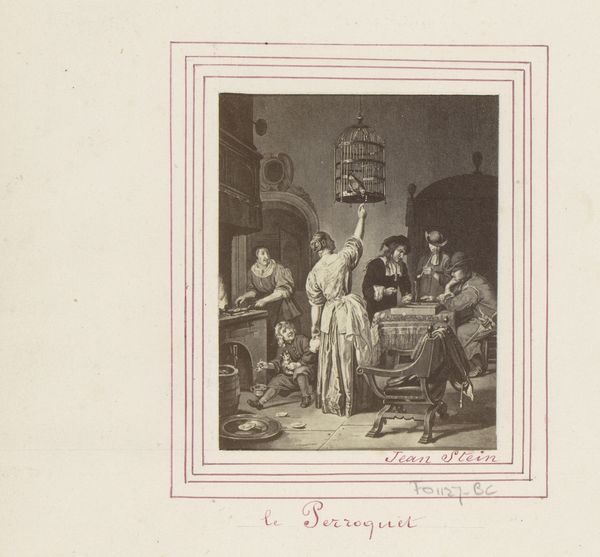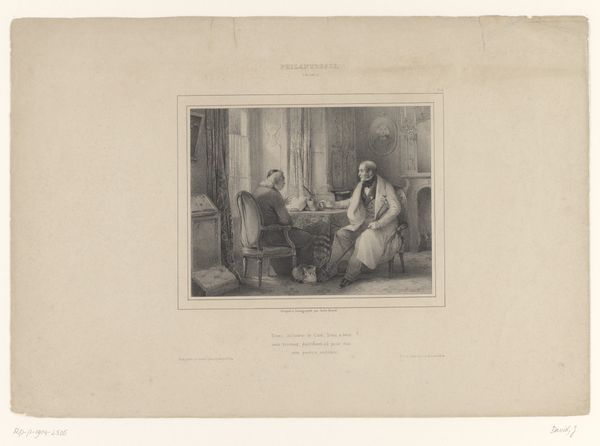
Fotoreproducties van De papegaaienkooi door Jan Steen en Het doktersbezoek door Jan Steen c. 1866 - 1874
0:00
0:00
anonymous
Rijksmuseum
print, photomontage, photography, gelatin-silver-print
#
aged paper
#
homemade paper
#
paper non-digital material
#
dutch-golden-age
#
paperlike
# print
#
photomontage
#
flat design on paper
#
light coloured
#
personal journal design
#
photography
#
folded paper
#
gelatin-silver-print
#
genre-painting
#
history-painting
#
paper medium
#
design on paper
Dimensions: height 122 mm, width 92 mm, height 122 mm, width 93 mm
Copyright: Rijks Museum: Open Domain
Editor: Here we have “Fotoreproducties van De papegaaienkooi door Jan Steen en Het doktersbezoek door Jan Steen,” a photomontage from circa 1866-1874. The print showcases two scenes in sepia tones that almost feel like memories. What stories do you think these images tell? Curator: These photographs offer an interesting perspective into how the art of Jan Steen was being received and reproduced in the mid-19th century. This was a time when photography was becoming more widespread, yet it wasn't always seen as a tool for democratizing art. Instead, photographic reproductions often reinforced existing hierarchies. Notice how these are presented: staged, framed, almost like collectibles. Editor: So, it’s not necessarily about accessibility, but about maintaining a certain… prestige? Curator: Exactly. Who had access to photography, to owning these prints? Certainly not the working class, the subjects often depicted in Steen's genre paintings. This photomontage performs a fascinating act of cultural appropriation, taking everyday life scenes and reframing them for a bourgeois audience. What’s also key here is to think about what aspects of Dutch Golden Age painting resonated with the rising middle class. Did they perhaps see a reflection of their own values and aspirations mirrored in these images, even if selectively? Editor: That’s a really interesting point! I hadn’t considered the audience or the selective presentation so explicitly. I was focusing so much on the imagery itself. Curator: It is always vital to situate these historical works in a dialogue that explores the complex intersections of class, identity, and representation that shape our understanding. The seemingly simple images prompt important questions about the power dynamics inherent in the art world. Editor: Definitely gives me a lot to consider moving forward. Thanks for the insight.
Comments
No comments
Be the first to comment and join the conversation on the ultimate creative platform.
